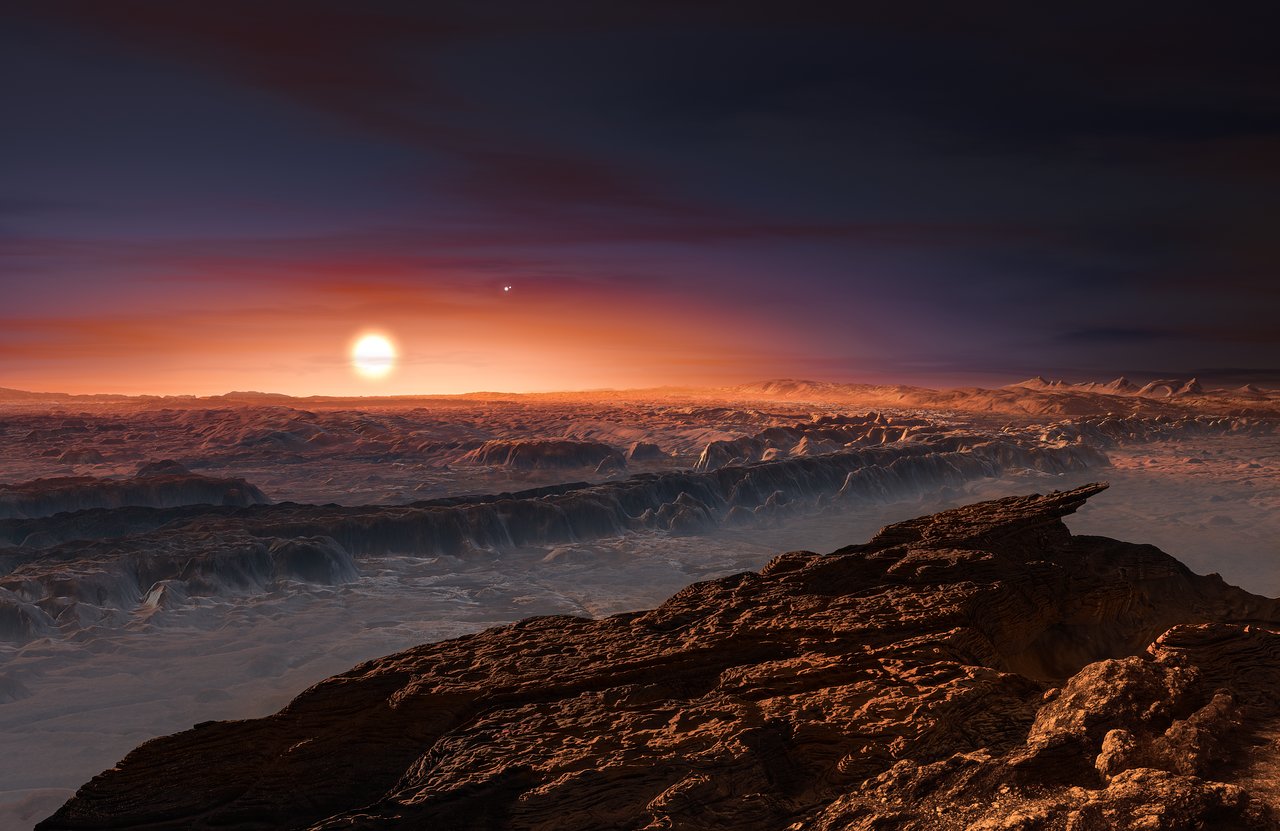
Astronomers today announced one of the most exciting exoplanet discoveries yet: an Earth-mass rocky world orbiting the nearest star to the Sun, Proxima Centauri. There had been hints before of such a world, but nothing was confirmed, until now. The planet, called Proxima b, is not only just slightly more massive than Earth, it orbits within the star’s “habitable zone.” The estimated temperatures of the planet could allow liquid water to exist on its surface. Not only is this planet potentially habitable, depending on other factors, it is also now the closest known exoplanet.
The discovery is the result of a months’ long observing campaign during the first half of 2016, by the Pale Red Dot campaign. Astronomers used the HARPS spectrograph on the ESO 3.6-metre telescope at La Silla in Chile and simultaneously monitored the star with other telescopes around the world. The team of astronomers was led by Guillem Anglada-Escudé, from Queen Mary University of London. The Pale Red Dot campaign was named in reference to Carl Sagan’s well-known description of Earth as a “pale blue dot.” Proxima b might take on a more reddish hue since its star is a red dwarf.
Proxima Centauri is part of the Alpha Centauri system of three stars; the other two are Alpha Centauri A and Alpha Centauri B (known together as Alpha Centauri AB). As seen from Earth, Proxima Centauri is much fainter than its two other companion stars. This star system is 4.37 light-years away from Earth, closer than any other stars.
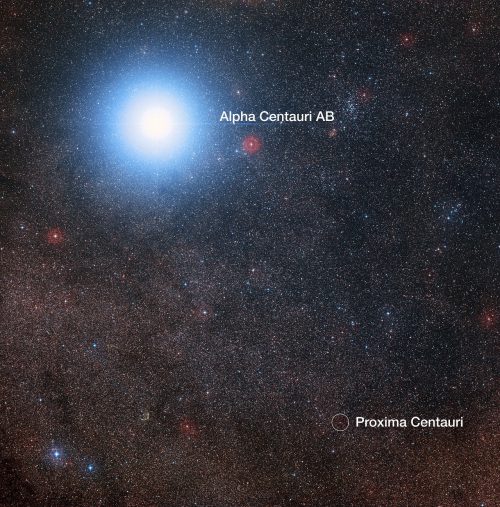
As Anglada-Escudé explained: “The first hints of a possible planet were spotted back in 2013, but the detection was not convincing. Since then we have worked hard to get further observations off the ground with help from ESO and others. The recent Pale Red Dot campaign has been about two years in the planning.”
“I kept checking the consistency of the signal every single day during the 60 nights of the Pale Red Dot campaign,” he said. “The first 10 were promising, the first 20 were consistent with expectations, and at 30 days the result was pretty much definitive, so we started drafting the paper!”
Proxima b orbits its star closer than Mercury does to our own Sun, but because the star is smaller and cooler than the Sun, it turns out that the planet orbits within the habitable zone, the region where temperatures on a rocky planet could allow liquid water to exist on the surface. The estimated temperatures of the planet would indeed be ideal for liquid water, although whether there actually is any or not depends on other factors as well. Proxima Centauri is a very active star, with frequent ultraviolet and X-ray flares, which would have a detrimental effect on potential habitability, although not eliminating it.
Proxima b has a mass about 1.3 times that of the Earth, and orbits about 4.3 million miles (7 million kilometers) from Proxima Centauri, which is only 5 percent of the distance from Earth to the Sun. It was discovered by measuring tiny doppler shifts in the star; Proxima Centauri exhibits a regular pattern of changing radial velocities, repeating every 11.2 days. Sometimes it is moving toward Earth, and sometimes away from Earth. The planet is also thought to be tidally locked to its star, keeping one “side” of the planet in perpetual daylight, while the other side is in perpetual night. This would mean that Proxima Centauri probably doesn’t have seasons the way Earth does.
As for water, two related papers suggest the planet could have liquid water in the sunniest regions, either in an area in the hemisphere of the planet facing the star (synchronous rotation) or in a tropical belt.
Not much is known about the planet’s atmosphere yet, if it does have one. Some of the methods to study an exoplanet’s atmosphere depend on the planet transiting its star as seen from Earth, but currently there is no evidence that Proxima b does.
The discovery of Proxima b brings scientists a big step closer to finding a “second Earth,” a planet of similar size and mass, with liquid water on its surface. Many smaller rocky planets are being discovered now, but some are known to be too hot, while others we just don’t know enough about their surface conditions yet. Determining that will require further observations, including by new telescopes now being planned and built. This includes Proxima b. There are also many new worlds yet to be found. As Anglada-Escudé concluded:
“Many exoplanets have been found and many more will be found, but searching for the closest potential Earth-analogue and succeeding has been the experience of a lifetime for all of us. Many people’s stories and efforts have converged on this discovery. The result is also a tribute to all of them. The search for life on Proxima b comes next … ”
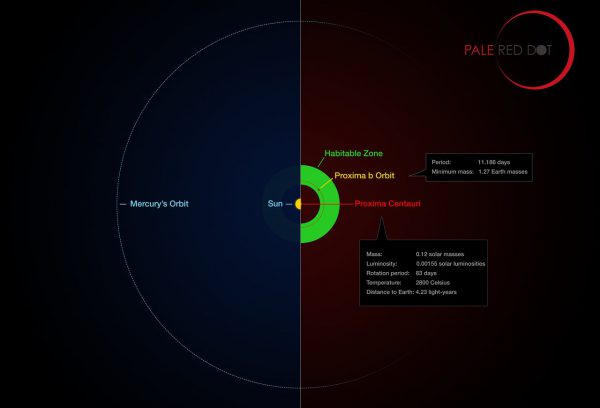
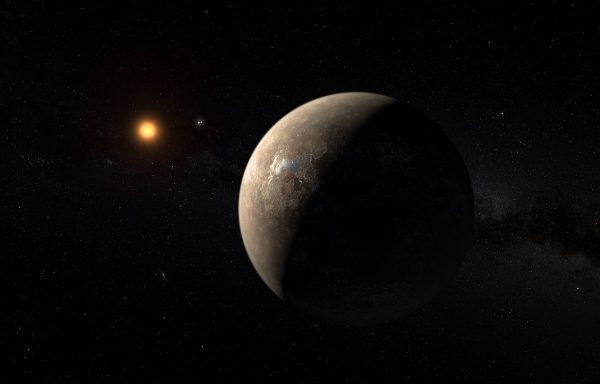
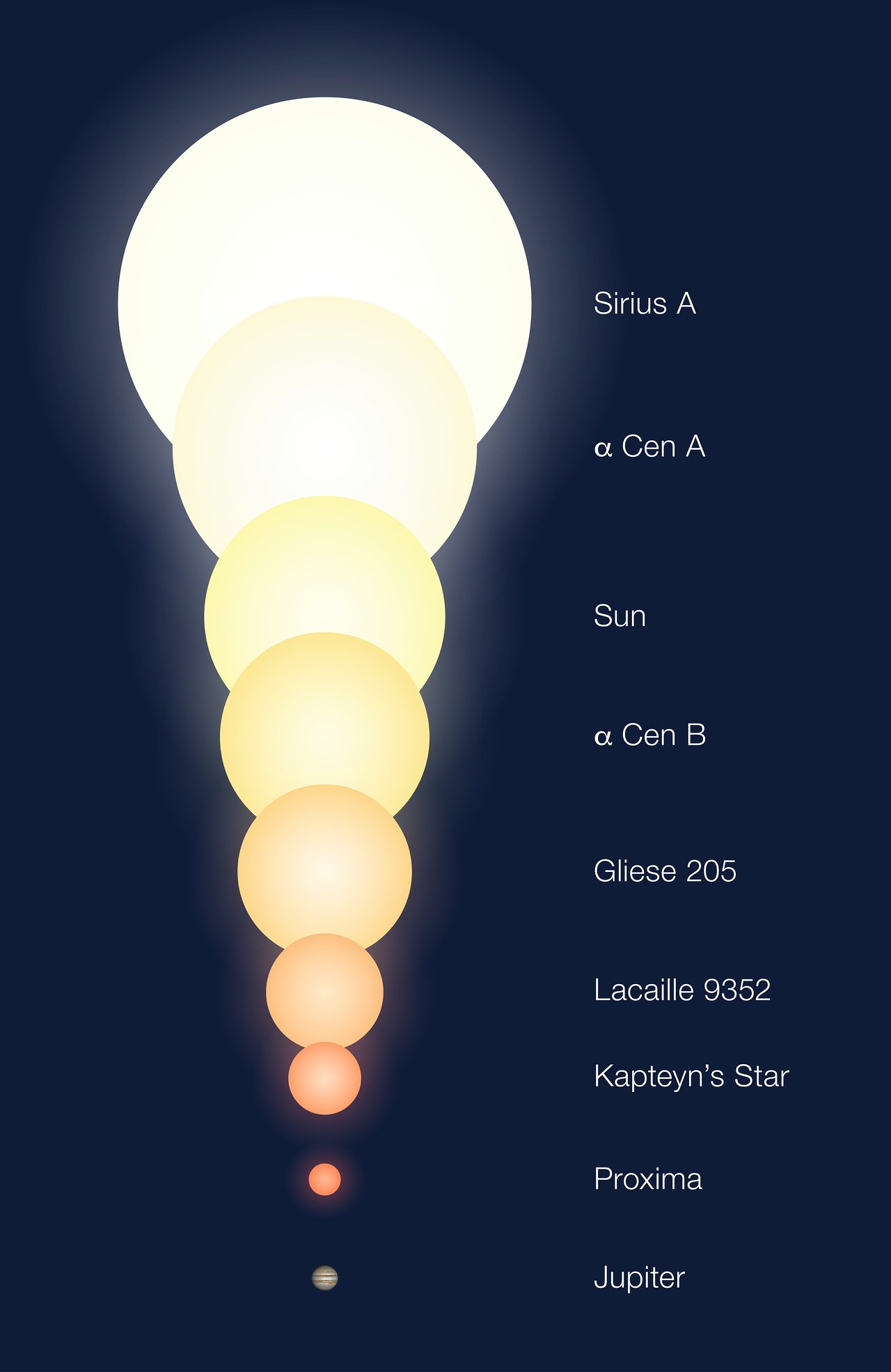
The finding is just the latest in a continuing stream of exoplanet discoveries, which now totals 3,312 confirmed planets, according to the Open Exoplanet Catalogue. Many more candidates are still waiting to be confirmed. NASA’s Kepler Space Telescope has played a leading role in exoplanet research, discovering the majority of these new worlds so far. The mission has found that not only are exoplanets common, with most stars having them, but they may even be more numerous than stars themselves. Also, the most common types of exoplanets seem to be smaller ones, smaller than Neptune and down to smaller than Earth. This includes “super-Earths” which are rocky and a bit larger than Earth, but still smaller than any gas or ice giants. Among many others, Kepler has discovered Earth’s “bigger and older cousin” and three super-Earths all orbiting a nearby star.
As previously reported on AmericaSpace, there is new evidence that red dwarf stars may be more life-friendly than previously thought. That is good news for those hoping to find alien life, since red dwarfs are the most common type of star in our galaxy. As noted by Peter Driscoll, co-author of a new study in Astrobiology, “The question I wanted to ask is, around these small stars, where people are going to look for planets, are these planets going to be roasted by gravitational tides?” The result? “In summary, tides are more influential around low mass stars. For example, planets around stars with 0.2 solar masses, experience a tidal runaway greenhouse [effect] for 1 billion years and would be tidally dominated for 10 billion years … We find a threshold at a stellar mass of 0.45 times that of the Sun, above which the habitable zone is not tidally dominated. These stars would be favorable targets in the search for geologically habitable Earth-like planets as they are not overwhelmed by strong tides.”
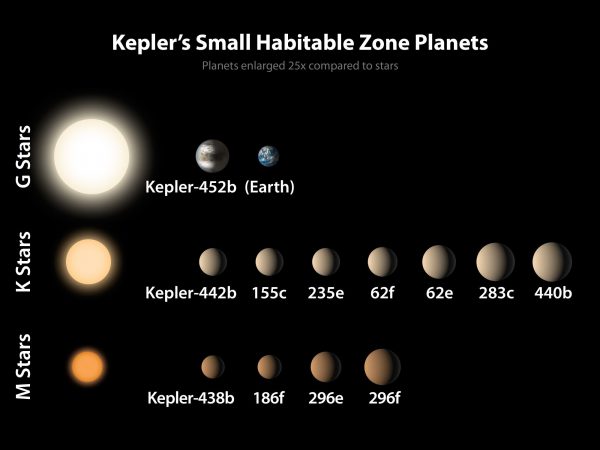
In 2014, the first exoplanet similar in mass to Earth was discovered orbiting a red dwarf star. That planet, called OGLE-2013-BLG-0341LBb, has a mass no more than twice that of Earth and orbits at a very similar distance from its star that Earth does from the Sun. Being a red dwarf star, however, means that the planet is not in the habitable zone and is much colder than Earth.
The Alpha Centauri system is also the target of the Starshot project, an American initiative which aims to be the destination of humankind’s first attempt to travel to another star. As described on their website, Starshot “is a $100 million research and engineering program aiming to demonstrate proof of concept for a new technology, enabling ultra-light unmanned space flight at 20% of the speed of light; and to lay the foundations for a flyby mission to Alpha Centauri within a generation.” Exciting stuff. Even at that speed, it would take just over 20 years to reach the Alpha Centauri system, but it is doable with current technology.
The announcement of Proxima b follows a period of much rumor for the past couple weeks. As typically happens, some media and other sources hyped the discovery of an “Earth-like” planet. Not enough is yet known to make that kind of hasty conclusion, and indeed it seems that in some ways Proxima b is quite different from Earth. It may be habitable, we just don’t know yet. Despite that, it does show (again) that Earth-mass planets, including ones in the habitable zones of their stars, are fairly common. That in itself is exciting, and in the search for Earth 2.0, Proxima b is a big step closer in that quest.
The paper describing the discovery will be published in Nature on Aug. 25.
Want to keep up-to-date with all things space? Be sure to “Like” AmericaSpace on Facebook and follow us on Twitter: @AmericaSpace




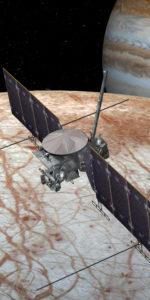
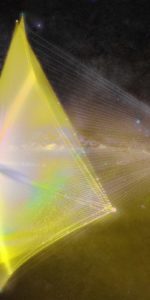
This is indeed an interesting development. I applaud “Starshot” as a further example of humanity’s desire to answer the “are we alone?” Question. Yet, it’s the tip of of the “cosmic iceberg
.”
” Proxima Centauri is a very active star, with frequent ultraviolet and X-ray flares, which would have a detrimental effect on potential habitability, although not eliminating it.”
From Attached article
“Researchers find that, currently, Proxima b receives 60 times more high-energy radiation than the Earth”
So if a being was on Proxima b what would be required to withstand the high UV light?
From Wikipedia
Evolution of dark skin pigmentation began around 1.2 million years ago…The primary factor contributing to the evolution of dark skin pigmentation was the breakdown of folate in reaction to ultraviolet radiation; the relationship between folate breakdown induced by ultraviolet radiation and reduced fitness as a failure of normal embryogenesis and spermatogenesis led to the selection of dark skin pigmentation.By the time modern Homo sapiens evolved, all humans were dark-skinned.
Could it be that we are all from Proxima b? At least some of us?
Water is a very effective radiation shield. It could be that life on Proxima b would thrive at a few meters below the surface. The surface (either of the water or on land) would not be a great place to live, in addition to high levels of UV radiation (which breaks down DNA), there’s also intense X-ray radiation. That said, there are a few microbes here on Earth that are extraordinarily radiation tolerant, that might do well on the surface of Proxima b.
As for humans, no. We’d be toast. Not just as adults, but unborn children are particularly vulnerable as well – even fairly low levels of radiation, such as from diagnostic x-rays, are enough to cause birth defects and miscarriages.
The late Dr. Robert L. Carroll developed an alternative physics which stated the maximum speed of a spacecraft can be 20 million times the speed of light. Power would be provided by an ultracold fusion Pion drive he tried to patent.
It may be possible to test Carroll’s hypothesis in the not too distant future. Along with numerous papers and other books, Carroll wrote a thin volume: Arcturus By Dawn, which discussed his unorthodox physics in easily readable form. You can download a free copy at: http://www.spiritguidedhealer.com/physics/ArcturusByDawn/index.htm
Carroll correctly predicted a path to room temperature superconductivity which resulted in a U.S. Patent, covering an Ambient Temperature Superconducting Filament, issued in 1982 to Ronald Bourgoin, one of his former students. Bourgoin’s experiment was reproduced successfully at the University of Alabama under a Star Wars contract. The event was never made public.
Prior to his demise, Carroll worked with AESOP Institute for 12 years. Toward the end of his life he presented a paper summarizing Carrollian Mechanics at the AAAS Meeting in San Francisco. It was well received.
Bourgoin’s work interested Linus Pauling, whose hobby was the search for an ambient temperature superconductor. I met with him at his request to discuss the Bourgoin patent.
AESOP Institute specializes in unconventional science with important energy implications. See aesopinstitute.org
If “the event was never made public,” then how do you know about it?
Americaspace is now the home of “Carollian Mechanics?”
Pathetic.